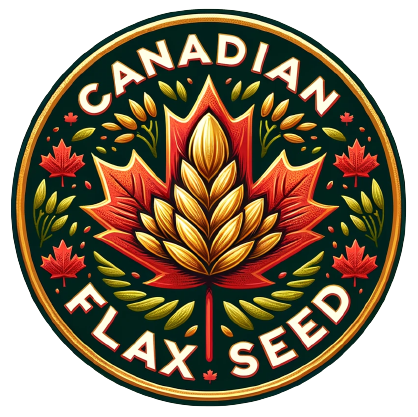Historical Significance: The Impact of Flaxseed Introduction in Canada
Table Of Contents
Historical Significance: The Impact Of Flaxseed Introduction In Canada | Exploring the Historical Significance of the Impact of Flaxseed Introduction in Canada
Key Takeaways
- Overview of flaxseed’s role in Canada’s agricultural landscape
- The journey of flaxseed’s introduction and development in the region
- Influence on farming practices and agricultural productivity in Canada
- Economic ramifications linked to flaxseed cultivation and trade
- Health benefits and nutritional aspects associated with flaxseed consumption
- Environmental effects stemming from flaxseed agricultural practices
Historical Significance: The Impact Of Flaxseed Introduction In Canada | Overview of Flaxseed in Canada
The Historical Significance: The Impact of Flaxseed Introduction in Canada can be traced back to the early days of agriculture in western Canada, where common flax, also known as flaxseed, became a staple crop. The cultivation of flax in Canada not only diversified farming practices but also laid the groundwork for a flourishing flax industry that has seen growth over the years. Ground flaxseed gained popularity as a nutritional supplement, reflecting the increasing awareness of the health benefits associated with flaxen products. As Canada continues to influence global markets, comparisons with the flax industry in New Zealand highlight the ongoing relevance of flax as an economically viable crop, illustrating the essential role of Canadian farmers in shaping the agricultural landscape. The Historical Significance: The Impact of Flaxseed Introduction in Canada remains an important chapter in understanding the agricultural evolution of the region.
Historical Significance: The Impact of Flaxseed Introduction in Canada | Early Cultivation Practices
Early cultivation of flax in Canada has deep roots, tracing back to the adaptation of wild flax species. The introduction of perennial flax marked a significant shift in agricultural practices across the Canadian prairies. Farmers began to recognize the potential of ground flaxseeds, utilizing them not only for their oil but also as a valuable source of fiber for making flax fabric. The retting process became essential for extracting flax fibers, enhancing the production of high-quality textiles and contributing to the economy.
Flaxseed oil gained prominence as an essential product due to its numerous health benefits highlighted by Health Canada. The cultivation of pale flax varieties allowed for the extraction of flaxseed oils that are rich in omega-3 fatty acids. As the demand for healthy cooking oils and natural products grew, the importance of flaxseeds in various forms expanded significantly. This trend reinforced the historical significance of flaxseed introduction, transforming agricultural practices and consumer preferences across the nation.
- The introduction of flaxseed led to diversification in crop rotation practices, improving soil health.
- Flax cultivation supported local economies by providing farmers with an additional cash crop.
- The use of flax fibers expanded beyond textiles to various industrial uses, including paper and eco-friendly products.
- Awareness of the health benefits of flaxseed spurred its incorporation into the diets of Canadians, promoting better nutrition.
- The development of flaxseed markets encouraged innovation in processing and distribution methods.
- Research and education about flax cultivation emerged, enhancing agricultural knowledge and practices.
- The historical significance of flaxseed continues to influence sustainable farming methods and health-conscious consumption today.
Economic Relevance in Agriculture
Flaxseed holds significant economic relevance within the agricultural landscape of Canada, particularly in Saskatchewan. The Canadian Grain Commission has recognized the value of flax as a versatile crop that contributes to the nation’s economy. Beyond its role as a food source, flaxseed is processed into various products, including flax oils and flaxseed meals. These products have gained popularity for their nutritional benefits, driven by the demand for health-conscious choices. Historical significance surrounds the impact of flaxseed introduction in Canada, which has helped reshape farming practices and crop rotations.
The cultivation of flaxseed offers diversification advantages for Canadian farmers, allowing them to enhance their income streams and stabilize their market presence. Flax lignans, known for their health-promoting properties, have also boosted the market for flax-based products. As a result, farmers in provinces like Saskatchewan have embraced the growing interest in flaxseed, fostering a stronger agricultural economy. The historical significance of flaxseed introduction in Canada continues to influence modern farming techniques and contributes to the country’s reputation as a leader in high-quality agricultural products.
Flaxseed’s Historical Journey
The introduction of flaxseed to Canada marked a pivotal moment in agricultural history, contributing significantly to the region’s economy and farming practices. Early efforts in cultivation began in places like Ontario, where flax seeds were sown not only for their economic viability but also for their nutritional benefits. The production of flax seed oil and flax fibers has deep roots in Canadian heritage, with flax mills emerging as an important industry. The health benefits associated with flaxseeds meals have been widely recognized, aligning with initiatives by Health and Welfare Canada to promote better diets. Celebrating the International Year of Natural Fibres highlights the enduring relevance of this versatile crop on the American continent. This rich history reflects the broader Historical Significance: The Impact of Flaxseed Introduction in Canada, illustrating how flax has woven itself into the fabric of Canadian agriculture and culture.
First Introductions and Adaptation
The historical significance of the impact of flaxseed introduction in Canada can be traced back to its early cultivation, particularly in regions like Saskatchewan and Ontario. Originally brought in from areas such as Australia and New Zealand, the crop quickly adapted to Canadian climates. Research conducted on the suitability of flaxseed for farming highlighted its potential for thriving in diverse conditions. Over time, it became an important agricultural staple, contributing significantly to Canada’s agricultural diversity.
Through its introduction, flaxseed not only enhanced local farming practices but also positioned Canada as a key player in global trade. The crop gained popularity in international markets, with exports reaching countries like China and Chile, specifically Temuco, known for its agricultural exchange. The growth of flaxseed farming has transformed rural economies and showcased Canada’s capacity for agricultural adaptation and innovation.
Indigenous Use and Cultural Importance
Flaxseed has played a pivotal role in the cultural practices and diets of Indigenous peoples across Canada. Its historical significance transcends mere agriculture, as it was used for various purposes, including medicine, textiles, and rituals. Canadian flax varieties were cultivated for their nutritional value, and the seeds were often ground into meal or oil for consumption. The introduction of flax in Canada not only provided sustenance but also fostered important traditional practices among Indigenous communities, highlighting the value of this versatile crop.
The cultivation of flaxseed also contributes to the economic landscape for Canadian flax growers, as it supports local economies and cultural heritage. Important flaxseed production in Canada has enabled communities to thrive through both subsistence and trade. Canadian flax exports have expanded globally, with demand reaching as far as India. This not only underscores the agricultural significance of flax Canada but also reinforces the ties between Indigenous practices and contemporary economic opportunities, thereby enriching the cultural fabric of the nation.
Impact on Canadian Agriculture
Flaxseed has played a vital role in the historical significance of Canadian agriculture, particularly through its introduction and widespread utilization. Whole flaxseed and fresh flaxseed have become essential components of farming practices, particularly in Saskatchewan, where flax development has flourished. The composition of flaxseed, rich in omega-3 fatty acids and dietary fiber, has prompted farmers to appreciate its nutritional benefits. Milled flaxseed allows for easier incorporation into various diets, enhancing the economic landscape of agricultural activities. Utilizing flaxseeds contributes not only to crop diversification but also to sustainable agricultural practices. The historical significance of the impact of flaxseed introduction in Canada is evident in its continued relevance within the agricultural sector, showcasing its benefits through improved soil health and increased biodiversity.
Crop Diversification Benefits
The introduction of flaxseed in Canada holds considerable historical significance, particularly in promoting crop diversification. Farmers began cultivating flax in various regions, leading to a notable increase in total flaxseed production. As agricultural practices evolved, the versatility of flaxseeds became apparent. Flax contains numerous beneficial constituents, making cultivated flax an attractive option for those seeking to enhance soil health and boost agricultural sustainability. The widespread adoption of flaxseed interventions has significantly altered crop rotations, allowing farmers to reduce reliance on single-crop systems.
The impact of flaxseed consumption extends beyond traditional agriculture, as it facilitates economic stability for Canadian farmers. By diversifying their crop portfolios, farmers can mitigate risks associated with market fluctuations and environmental challenges. The historical significance of flaxseed introduction in Canada is reflected in the adaptability of cultivated flax. As regions embraced flaxseed samples in their farming practices, the flax spread rapidly, demonstrating how a single crop can enhance overall agricultural resilience. This strategic approach has proven vital in fostering a robust agricultural sector in Canada.
Flaxseed as a Sustainable Crop
Flaxseed products have gained recognition for their sustainability within agriculture, contributing significantly to the historical significance of flaxseed introduction in Canada. Traditional flaxseed oil and defatted flaxseed are valuable components that enhance the nutritional profile of various diets. As a major flax exporter, Canada has positioned itself successfully in the global market, benefiting from the favorable global flax prices while promoting the importance of flax domestication and its benefits. The flax industry thrives on the versatility of flaxseed content, making it an essential crop for both farmers and consumers.
Sustainability in flax farming is linked to its low environmental impact and ability to thrive within diverse agricultural systems. The adoption of crop rotation practices, including flaxseed cultivation, supports soil health and reduces the need for chemical fertilizers. This eco-friendly approach aligns with the growing demand for sustainable food sources, further boosting the potential for flax exports. The historical significance of flaxseed introduction in Canada continues to resonate as the country embraces innovations that enhance the sustainability of this vital crop.
Economic Influences of Flaxseed
The Historical Significance: The Impact of Flaxseed Introduction in Canada is evident in the economic landscape shaped by its cultivation. Saskatchewan flax growers have played a pivotal role in advancing flax production, utilizing the flaxseed plant to enhance agricultural diversity. Flaxseed supplementation has gained traction, with many turning to flax preparations such as flaxseed powder and flax oil for their nutritional benefits. The flax institute has been instrumental in promoting research and innovation, aiding the industry’s evolution. The incorporation of flax in crop rotations has not only improved soil health but has also positioned Canada as a significant player in the global flax market, showcasing the economic potential tied to this versatile crop.
Contribution to Canadian Economy
The introduction of flaxseed in Canada has had profound economic implications, showcasing its Historical Significance: The Impact of Flaxseed Introduction in Canada. With the rise of flax cultivation, farmers began to capitalize on the diverse array of flax products available. Defatted flaxseeds and flaxseed flakes have emerged as popular ingredients in various food items, highlighting the versatility of the word “flax” in culinary applications. The Canadian climate has proven favorable for cultivating high-quality flax, further boosting its market potential.
Flaxseed oil, especially the long-term flaxseed oil, has spurred both domestic and international demand. This surge has allowed Canadian producers to explore global trade opportunities, positioning Canada as a key player in the flaxseed market. Flaxseed additives are increasingly sought after for their health benefits, driving innovation within the agricultural sector. The cultivation of retted flax plays a crucial role in supporting local economies and enhancing the sustainability of Canadian agriculture, making flaxseed a vital contributor to the nation’s economic landscape.
- Increased income for Canadian farmers through higher demand for flaxseeds.
- Creation of jobs in the agricultural and processing sectors related to flax production.
- Expansion of export markets for Canadian flaxseed and its products.
- Enhancement of Canada’s reputation as a leader in sustainable agricultural practices.
- Contribution to local economies through the establishment of flax processing facilities.
- Promotion of health-focused food products, appealing to health-conscious consumers.
- Diversification of crop rotation options for farmers, reducing dependency on single crops.
Global Trade Opportunities
The Historical Significance: The Impact of Flaxseed Introduction in Canada has paved the way for various global trade opportunities. The Canadian flax commission plays a crucial role in promoting the total flax plant and its derivatives on an international scale. This includes the export of edible flaxseed products, which are increasingly sought after in markets worldwide due to their nutritional benefits. Products such as flaxseed gum and flaxseed paste have also gained traction, contributing to Canada’s reputation as a leader in flax crop cultivation.
Canada moves steadily to expand its influence in the global market by focusing on the unique properties of flaxseed lignan and uncrushed flaxseeds. These products are not only valued for their health benefits but also for their versatility in various industries. The commitment to quality and sustainability in flax plant farming enhances marketability. As the demand for man flaxseed continues to grow, Canada stands poised to seize new opportunities in international trade, further solidifying its place as a crucial player in the global flaxseed market.
Health and Nutritional Implications
The Historical Significance: The Impact of Flaxseed Introduction in Canada is reflected in its profound influence on dietary practices across the nation. Flax growers have harnessed the power of dietary flaxseed, which is rich in lignans and provides numerous health benefits. Commonly consumed in various forms, including flaxseed tea and flaxseed chutney, these products showcase the versatility of this nutritious seed. Research indicates that dietary flaxseed protects against several health conditions, making it a vital component of the Canadian diet. Techniques like pond-retted flax further enhance its nutritional profile, while unretted flax and flaxseed gums have become popular for their functional properties. The integration of dietary flaxseed supplementation into daily meals underscores its importance in promoting health and well-being.
Flaxseed in Canadian Diet
Flaxseed has emerged as a staple in many Canadian diets, offering a wealth of health benefits and nutritional value. Canadian growers have recognized the potential of flaxseed proteins, which serve as an excellent source of plant-based protein. The presence of concentrated flaxseed protein makes it an appealing option for those seeking alternatives to animal proteins. The flax plants cultivated in Canada yield not only nutrients but also essential flax fibers that contribute to digestive health. This aligns with the Historical Significance: The Impact of Flaxseed Introduction in Canada, as it highlights how ancient practices have evolved into modern nutritional trends.
The incorporation of heated flaxseed into everyday meals has become increasingly popular among health-conscious Canadians. Studies published in the Canadian Journal demonstrate how flaxseed raises thiocyanate levels, which are known to support thyroid function. The high content of flaxseed fiber also promotes a feeling of fullness, making it a valuable addition to a balanced diet. Through these diverse applications, flaxseed highlights its role in Canadian culinary practices while offering a sustainable and nutritious food source that honors its historical significance.
| Nutritional Component | Amount per 100g | Health Benefits |
|---|---|---|
| Protein | 18g | Supports muscle maintenance and repair |
| Dietary Fiber | 27g | Promotes digestive health and aids in weight management |
| Omega-3 Fatty Acids | 22g | Support heart health and brain function |
| Antioxidants | High | Helps reduce inflammation and oxidative stress |
Research on Health Benefits
Research into the health benefits of flaxseed has revealed its crucial role in enhancing nutrition. Scientific studies highlight the significance of flax cultivars, which are cultivated for their high concentration of omega-3 fatty acids and dietary fiber. Flax producers have observed that incorporating flax powder into diets can lead to improved heart health and digestive functioning. The use of a flaxseed-water mixture serves as a simple yet effective way to maximize the nutritional profile of meals. This underscores the historical significance of the impact of flaxseed introduction in Canada as it continues to contribute positively to health trends.
Flaxseed groups have been actively investigating the various health implications of consuming flax-related products. Findings indicate that consumption of proc flax and flax landraces can aid in lowering cholesterol levels and managing weight. Studies reveal that good flax sales stem from an increasing awareness of these benefits among consumers. The versatility of flax fibres extends beyond food, influencing textiles and sustainable products. This comprehensive approach affirms the historical significance of flaxseed in Canada, highlighting its ongoing impact on both health and the economy.
Environmental Impact of Flaxseed Farming
The Historical Significance: The Impact of Flaxseed Introduction in Canada not only shaped agricultural practices but also enhanced environmental sustainability. Canadian producers have increasingly recognized the benefits of sown flax as a key player in crop rotation systems, leading to improved soil health. The brown flax variety and its by-products, like defatted flaxseed flour and flax straw, contribute to organic matter, enriching the soil with essential nutrients. Different raw flaxseed groups, such as flax proteins and flax elements, promote biodiversity while providing food and habitat for various organisms. The integration of the flax group into farming systems showcases a commitment to sustainable agriculture, aligning economic viability with ecological stewardship.
Soil Health and Crop Rotation
Crop rotation involving flaxseed has proven beneficial for maintaining soil health over time. The introduction of flaxseed cultivation in Canada marked a significant shift in agricultural practices. Rotating flax with non-flax products enhances nutrient cycling, which can lead to healthier soil. Incorporating flaxseed oil cake after flax crops can enrich the soil with organic matter. This approach supports the development of flaxseed flour and contributes to a comprehensive rotation system that includes yellow flax and other varieties.
Flax’s versatility extends beyond food products, enhancing the sustainability of farming systems. The use of flax lignan and flaxseed mucilage offers both agricultural and health advantages. Implementing a special flax diet that includes cold-pressed flaxseed oil and flaxseed-corn puff promotes nutrient diversity in crops. The industrial-scale production of flax fiber further supports economic and environmental sustainability. Each aspect of flax cultivation showcases its Historical Significance: The Impact of Flaxseed Introduction in Canada, reinforcing the crop’s essential role in promoting soil vitality.
Biodiversity and Ecosystem Support
Flaxseed farming plays a crucial role in promoting biodiversity and supporting ecosystems. The Historical Significance: The Impact of Flaxseed Introduction in Canada is evident in the cultivation practices that encourage a diverse range of species within agricultural landscapes. Practices such as crop rotation and the use of wild flax fibers contribute to soil health and resilience. Farmers benefit from these methods, as they help in increasing the organic matter present in the soil, which is essential for sustaining various crops. The availability of flax protein concentrate and whole flaxseed flour in the food market also enhances the nutritional profile of diets while providing habitat for beneficial insects.
The contributions of flaxseed to ecosystem support extend beyond crop production. The Flax Council promotes initiatives that foster sustainable agriculture practices, thereby enhancing the ecological balance in farming areas. The extraction of flaxseed oil leads to reduced waste, as various by-products, such as usable flax fibers, serve multiple purposes in industrial applications and consumer goods. The increasing popularity of flax tablets and flax drinks reflects a shift toward more sustainable and health-conscious food choices, further integrating the importance of flaxseed within the broader context of environmental stewardship and economic sustainability.
| Flaxseed Product | Benefits | Uses |
|---|---|---|
| Flax Protein Concentrate | High in protein; supports muscle health | Supplement in shakes; protein bars |
| Whole Flaxseed Flour | Rich in omega-3 fatty acids; boosts dietary fiber | Baking; as a thickening agent |
| Flaxseed Oil | Heart health benefits; reduces inflammation | Cooking oil; salad dressings |
| Flax Bedding | Biodegradable; renewable resource | Animal bedding; home insulation |
Conclusion
The Historical Significance: The Impact of Flaxseed Introduction in Canada has shaped both agricultural practices and cultural narratives within the region. Early cultivation practices laid the groundwork for the harvest of flax, which has turned into a versatile crop known for its quality flax fibers and cold-pressed flaxseed oils. The flax nutrition profile highlights its importance in promoting health, while remnants of flax fabric fragments found in archaeological sites underscore its historical use. This multifaceted crop continues to play a pivotal role in sustaining Canada’s agricultural economy and cultural heritage. Through understanding its historical journey, one can appreciate how flax, with its myriad applications, remains integral to Canadian life.
FAQS
What are the key components of flaxseed and how have they contributed to its utilization in regions like Saskatchewan, Canada, and the development of the flax industry in places such as Saskatoon, Canada, and Ottawa, Ontario?
Flaxseed consists of various constituents that impact its nutritional composition and benefits. In Saskatchewan, Canada, the industrial-scale flax fiber production and flaxseed oil extraction have driven the growth of the flax industry, with regions like Saskatoon and Ottawa actively contributing to advancements in flaxseed utilization. Flaxseed composition includes essential fibers and lignans, making it valuable for both food markets and industrial applications. Additionally, the presence of flax in New Zealand and initiatives in places like Temuco, Chile, indicate the global importance of flaxseed, which includes the ability to harvest thousands of flax seeds with varying concentrations of flaxseed particles that have significant health benefits.
How has the introduction of flaxseed influenced its cultivation in regions such as Saskatchewan and urban areas like Saskatoon and Ottawa in Canada, especially regarding the processing techniques like retting flax?
The introduction of flaxseed has significantly impacted its cultivation and processing across Canada, particularly in regions such as Saskatchewan, Saskatoon, and Ottawa, Ontario. The process of retting flax is crucial in preparing the flax for further use. Canadian flax seed has become a key player in the world flaxseed market, as its constituents, such as flaxseed lignans and fibers, have found diverse applications. The evolution of flaxseed production methods, coupled with its utilization in health food markets—whole flaxseeds and flax/flaxseed oil, increases its appeal. Additionally, the concentration of essential nutrients, which varies greatly among different flaxseed varieties, has led to a notable presence in the Canadian agricultural landscape and broader food market.
How does the introduction of flaxseed in Canada affect the nutritional content of foods produced in cities like Saskatoon and Ottawa, particularly regarding its constituents and various forms such as flaxseed hulls and flours?
The introduction of flaxseed into the Canadian food market has significantly enhanced the nutritional content of products produced in cities like Saskatoon and Ottawa. The constituents of flaxseed, including its rich concentration of omega-3 fatty acids, dietary fibers, and lignans, have made it a valuable addition to various foods. Moreover, the versatile forms of flaxseed, such as flaxseed hulls and flours, have been utilized in the development of healthier food options, ultimately promoting greater awareness of its benefits in regions like Saskatchewan where flaxseed development is prominent.
How has the integration of flaxseed into the agricultural practices of Saskatchewan contributed to its prominence in cities like Saskatoon, Canada, particularly in terms of the various forms of flaxseed utilized in the food market?
The integration of flaxseed into the agricultural practices of Saskatchewan has significantly contributed to its prominence in cities like Saskatoon, Canada, where the utilization of various forms of flaxseed, including flaxseed flours and whole flaxseeds, has become prevalent in the food market. The evolution of flaxseed cultivation methods has enabled farmers to adapt to regional needs, leading to an increase in flaxseed concentration and distribution of its constituents, ultimately enhancing the health benefits and commercial viability of flaxseed products within the market.
How has the introduction of flaxseed in Canada influenced the food market, specifically in regards to the various forms of flaxseed utilized and its nutritional constituents in Saskatchewan?
The introduction of flaxseed in Canada has significantly influenced the food market by enhancing the nutritional content of products in Saskatchewan. Various forms of flaxseed, such as whole flaxseeds and flaxseed fibers, are utilized for their health benefits, including the presence of beneficial constituents like omega-3 fatty acids and lignans. The addition of flaxseed to recipes has allowed for the creation of diverse food products, thus stimulating the Saskatchewan flax development and ultimately benefiting the local economy.
How does the evolution of flaxseed cultivation in Canada relate to its utilization in the food market, and what are the various forms of flaxseed available, including whole flaxseeds and other constituents found in the products originating from the integration of flax in regions like Saskatchewan?
The evolution of flaxseed cultivation in Canada has significantly impacted its utilization in the food market. Various forms of flaxseed, such as whole flaxseeds and flaxseed oils, are utilized for their health benefits. The constituents of flaxseed vary, including components that can raise thiocyanate levels, which are essential for different health aspects. Additionally, the agricultural practices and advancements in regions like Saskatchewan have facilitated the efficient harvest of flax, ensuring that the flax seed content remains high in nutritional value for consumers. The integration of flax into local food markets has led to an increase in flax addition to various foods, resulting in diverse and beneficial product offerings that leverage the unique properties of flax.
How does the addition of flaxseed in agricultural practices influence the promotion and variety of flax products available in the food market, especially in regions like Saskatchewan?
The addition of flaxseed into agricultural practices enhances the variety of products available in the food market, as options like whole flaxseeds, flaxseed oils, and flaxseed hulls can be utilized. In regions such as Saskatchewan, the evolution of flaxseed cultivation leads to the development of various flax-based products, contributing to a significant increase in the flaxseed content and its constituents for consumers. Additionally, as flax evolves in popularity, it has become essential for local farms to adapt to the growing demand for flax products, including the cultivation of specialized varieties that may raise thiocyanate levels in the crops.
How does the introduction of flaxseed in Canada impact the processing techniques employed in the food market, particularly for products made from whole flaxseeds and other forms of flaxseed?
The introduction of flaxseed in Canada has significantly influenced the food market, enhancing the processing techniques for utilizing flaxseed constituents. In regions like Saskatchewan, the addition of flaxseed has led to innovations in how whole flaxseeds and various flax forms are processed. This, in turn, raises awareness of the nutritional content of flaxseed products and fosters a diverse range of items in the food market, such as those that contain date flaxseed and other valuable flax components.
How can the introduction of flaxseed in Canada’s regions affect the food market, particularly regarding how flaxseed varies in nutritional content and the forms like whole flaxseeds used?
The introduction of flaxseed in Canada significantly impacts the food market as the nutritional content of flaxseed varies greatly depending on its form, such as whole flaxseeds. Understanding the flaxseed addition to diets helps in utilizing flaxseed effectively, which can raise awareness about its health benefits. Moreover, innovations in processing allow for different flaxseed products to be created, including those that incorporate thousand flax seeds, thus enhancing the range of flax products available in the food market. Additionally, the integration of flaxseed allows researchers to explore topics like flaxseed download citation in scholarly work and its role in health, as reflected in studies published in sources like The Lancet.
How has the integration of flaxseed in Canada’s agriculture affected the food market, particularly in terms of whole flaxseeds and other flaxseed forms utilized in urban areas like Saskatoon and Ottawa?
The integration of flaxseed into Canada’s agriculture has significantly influenced the food market, particularly with regard to whole flaxseeds and other forms of flaxseed utilized in urban food systems. As the popularity of flaxseed has risen, urban centers like Saskatoon and Ottawa have seen an increase in the availability of various flaxseed products. The nutritional content of these products, including the valuable omega-3 fatty acids, is often highlighted, making them a favorite choice among health-conscious consumers. The harvesting of flax and its subsequent processing techniques have also evolved to meet the demand for items that incorporate both whole flaxseeds and milled options, enhancing the culinary landscape across Canada.







